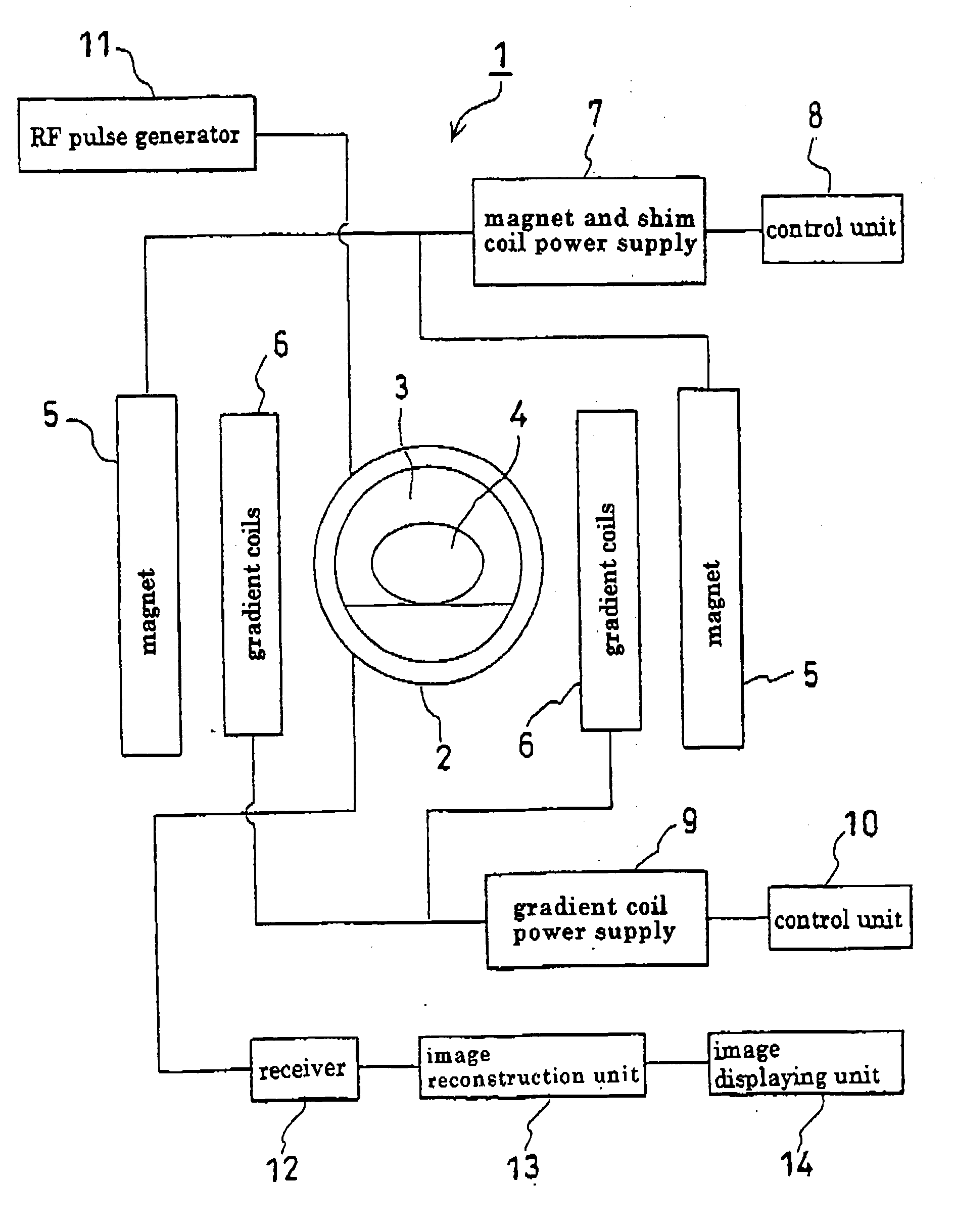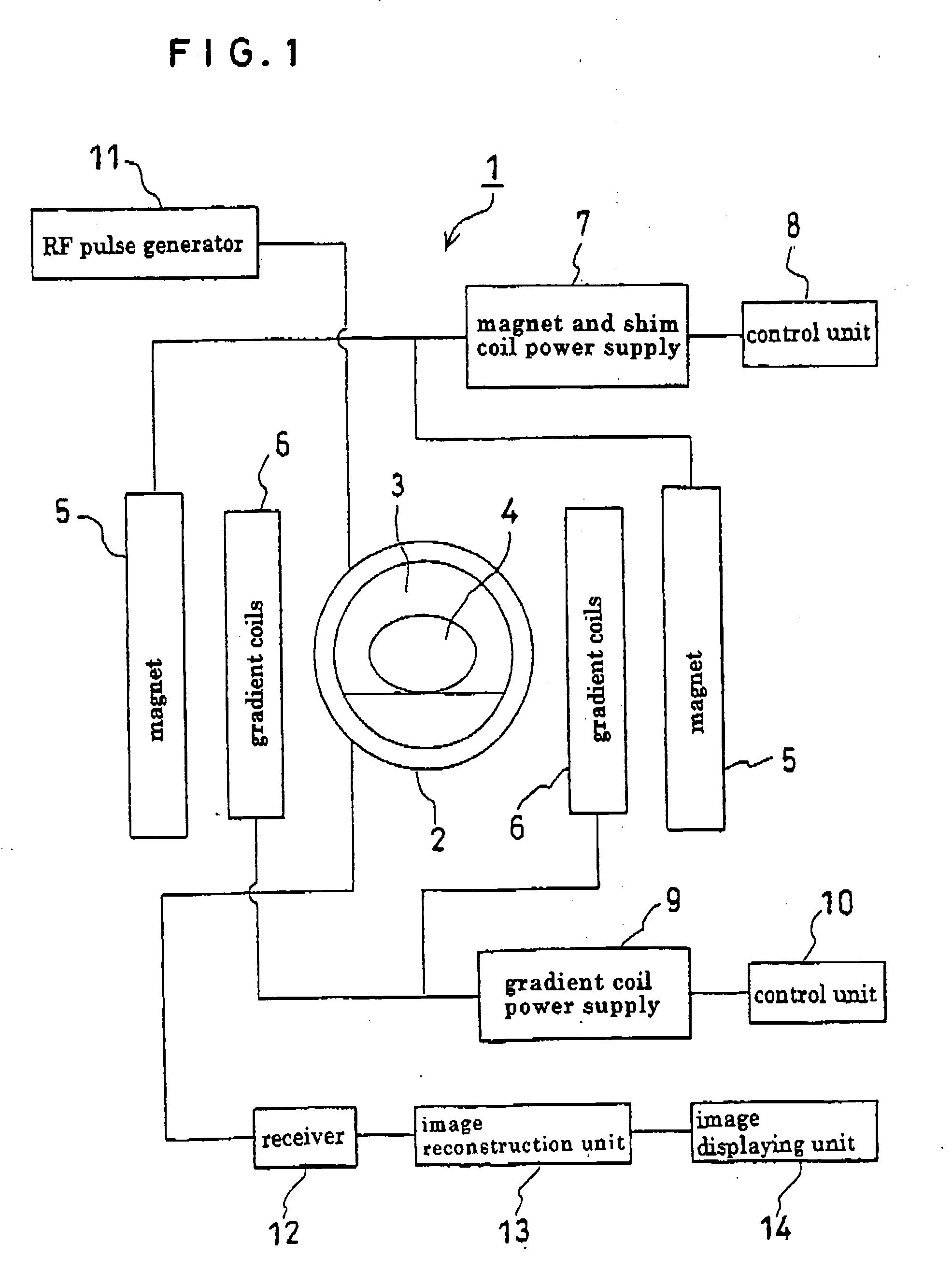Ultra high-speed magnetic resonance imaging device
- Summary
- Abstract
- Description
- Claims
- Application Information
AI Technical Summary
Benefits of technology
Problems solved by technology
Method used
Image
Examples
Embodiment Construction
[0040] Now, this invention will be described in detail below with reference to the accompanying drawings.
[0041]FIG. 1 shows one example of the ultrahigh speed magnetic resonance imaging equipment for embodying this invention based on the principle of nuclear magnetic resonance. In FIG. 1, an MR imaging equipment 1 is furnished with an excitation and detection unit 2. The excitation and detection unit 2 demarcates a measuring region 3 and excites a substance 4 for measurement in the measuring region 3 as well. To the excitation and detection region 2, an RF pulse (excitation pulse) is supplied from an RF pulse generator 11. This RF pulse possesses a resonance frequency corresponding to the numerous points in the measuring region 3. On the outside of the excitation and detection unit 2, a magnet 5 for generating static magnetic field and gradient coils 6 for generating gradient magnetic field are laid out in a planar state.
[0042] The ultrahigh speed magnetic resonance imaging equipm...
PUM
 Login to View More
Login to View More Abstract
Description
Claims
Application Information
 Login to View More
Login to View More - R&D
- Intellectual Property
- Life Sciences
- Materials
- Tech Scout
- Unparalleled Data Quality
- Higher Quality Content
- 60% Fewer Hallucinations
Browse by: Latest US Patents, China's latest patents, Technical Efficacy Thesaurus, Application Domain, Technology Topic, Popular Technical Reports.
© 2025 PatSnap. All rights reserved.Legal|Privacy policy|Modern Slavery Act Transparency Statement|Sitemap|About US| Contact US: help@patsnap.com



